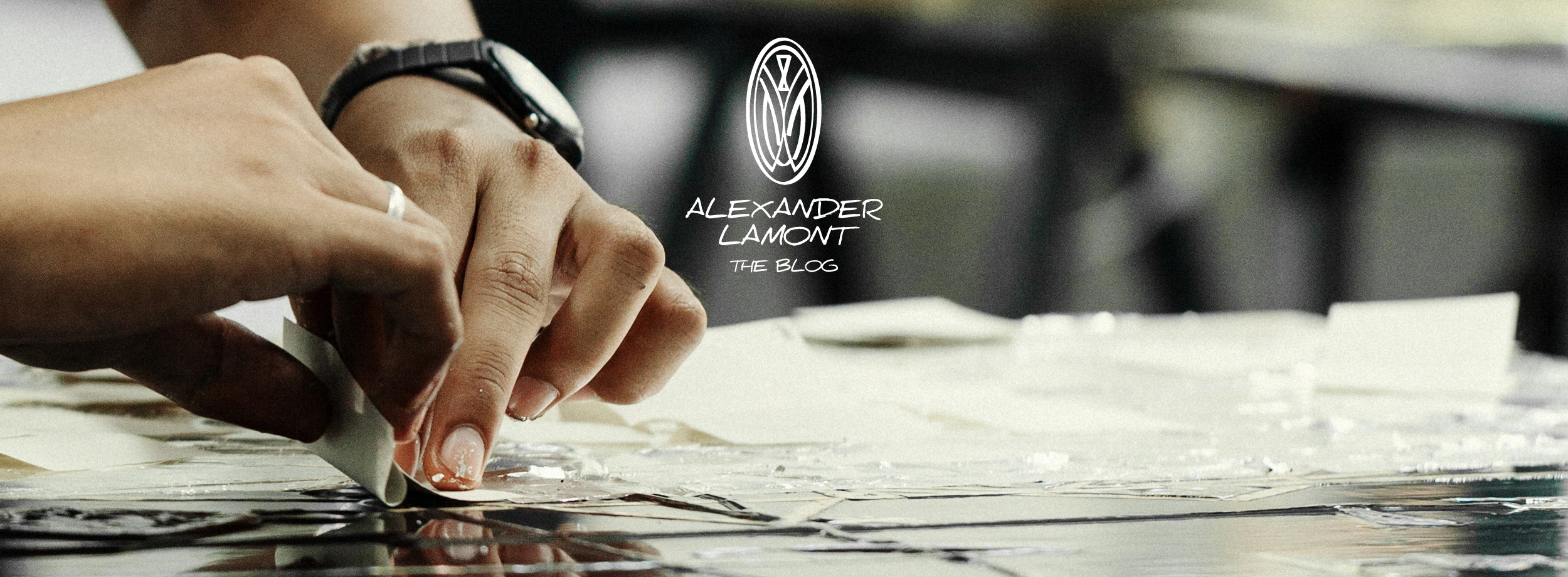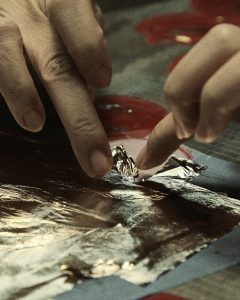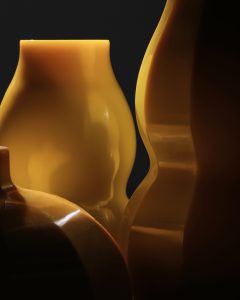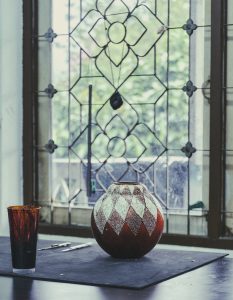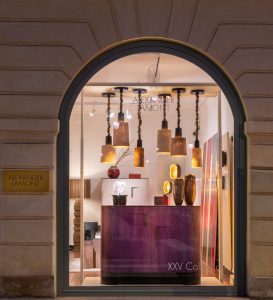A while ago I visited Malacca with Alexandra my wife. Yes, we are known by our friends as ‘the Alexes’. This trip was for one specific purpose – to look for the lantern maker of Malacca. For years I had seen a beautiful lantern in an antique shop in Bangkok that was not for sale. All the shop-keeper knew was that the lantern had originally come from the Straits Chinese in Malaysia. Further research had turned up the possibility that in Malacca rather than Penang lived the last great lantern maker.
We landed in Kuala Lumpur and drove south to the Malacca Straits in about two hours. We stayed at the Majestic Hotel which was a good walk from the old town but had a nice old feel and after Bangkok its always nice to be in cities where walking is easy.

On the first evening the hotel receptionist asked if we wanted to have a guided tour by the hotels resident ‘historian’. Normally I much prefer to follow my nose with a map in hand but we thought this was a good chance to track down the lantern maker so we met Miss Choo and it turned out that she knew him well.
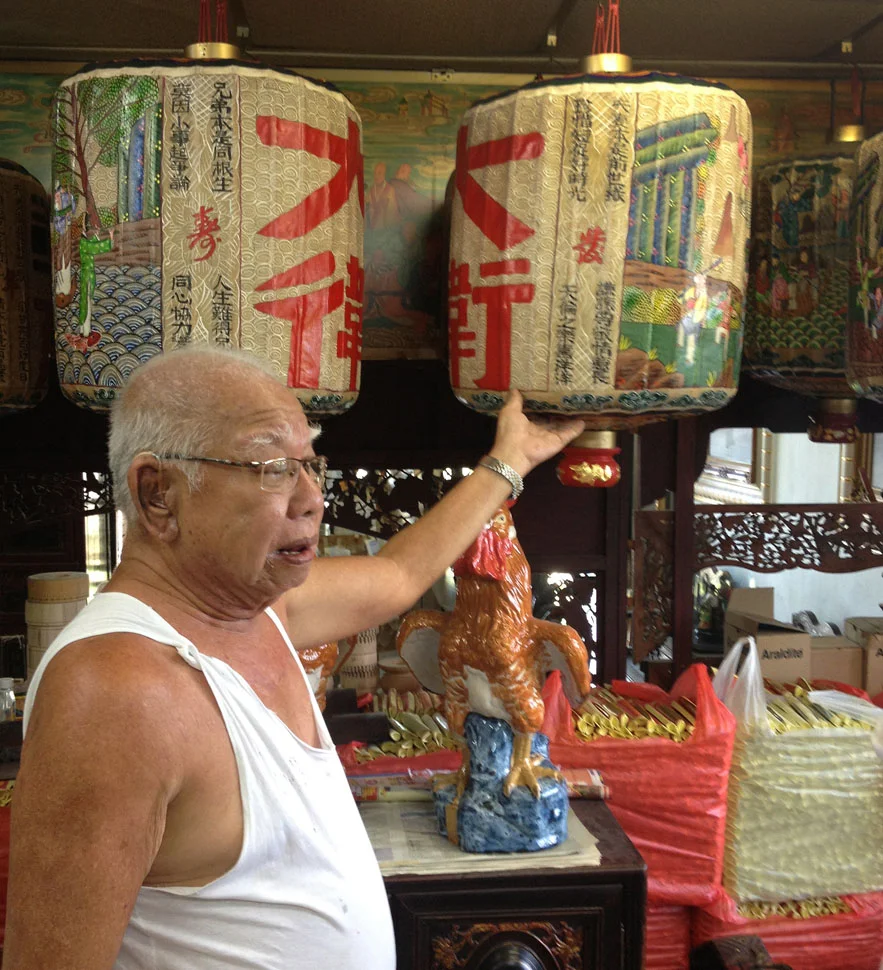
Next morning we went straight to find Mr Ang Teng Tak. He was in his vest and was painting lanterns in his small house beside the sea in Klebang. Mr Ang has been making lanterns for over fifty years. His process is to take the order from the customer in terms of size and general designs and then he will receive the instructions of which colours fit the customer through a sort of divining in his dreams. He said that when it comes to painting the faces he has to do it in complete privacy and that he sits cross-legged and levitates as he paints. For him this is a very powerful moment.
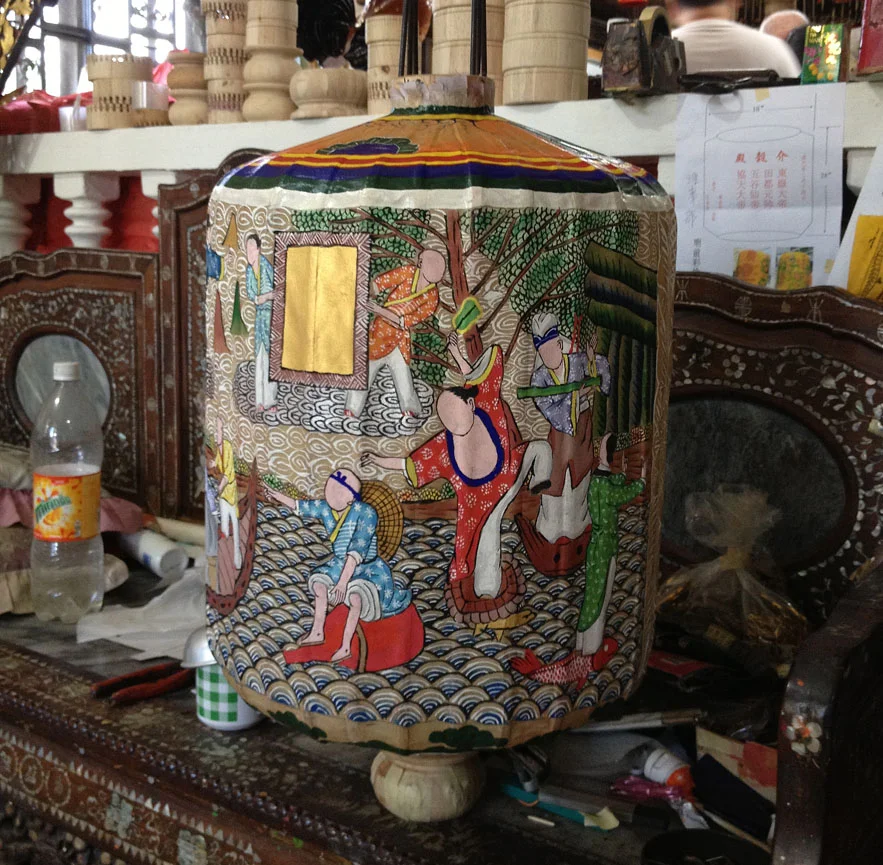
A small lantern with traditional scene. The face details are the very last thing that is painted and Mr. Ang claims to levitate while painting these.
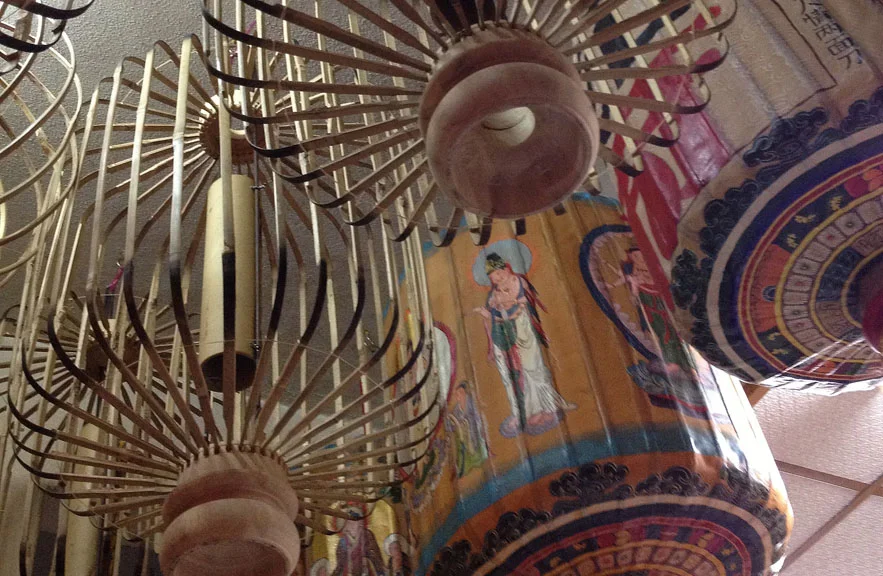
The Straits Chinese belief is that when one lives in a house, one is building up positive guanxi – a sort of natural spirit or chi that brings good fortune to the family. If one leaves the house then the guanxi stays in the house transferring the good fortune to the next dweller. The lanterns perform the vital role of containing the family guanxi, thereby enabling one to leave a house and keep the family spirits by taking the lanterns to the new place.
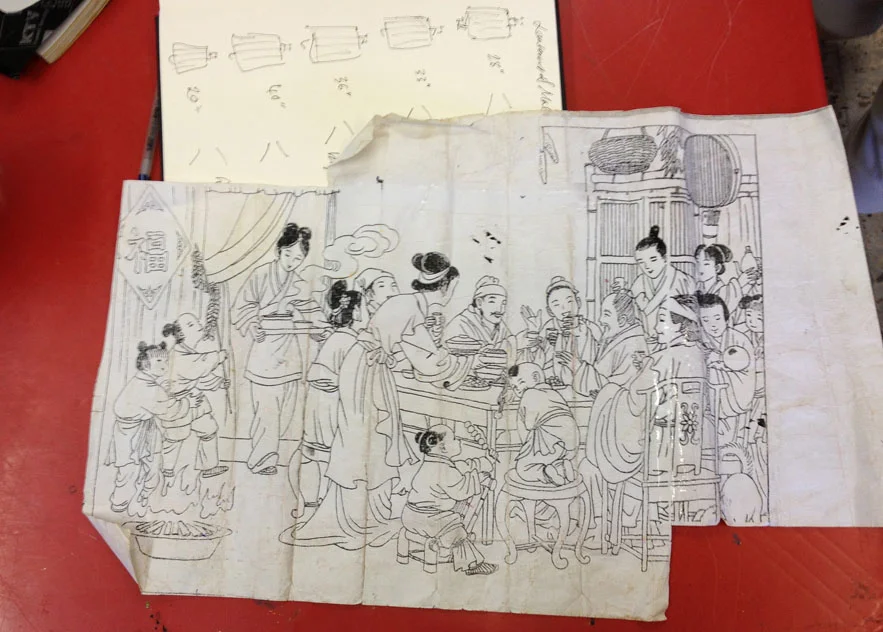
On one half of the lanterns are paintings that convey traditional scenes from Chinese stories. On the other half in big characters is the family name. Alexandra studied Chinese at the London School of Oriental and African Studies – where we met. During her time learning mandarin she was given the Chinese name of愛麗 pronounced Ai Li (characters for ‘love’ and ‘beautiful’). So we chose these characters for the lanterns that we ordered.
Of all the categories that I design in I love lanterns best of all. They bring a beautiful light quality to a room that is quite different from standard lamps with shades or chandeliers. Lanterns like those made by Mr Ang have had generations of development, perhaps centuries. The structure is one of fine burnt bamboo strips slotted into wooden top and base and wrapped in glue-soaked canvas. But there are so many small refinements when one looks closely at all the details. Once they would have been found all over China but today it seems from my research that Mr Ang is the last such lantern maker alive. His son definitely has no interest in continuing the tradition. “Much too hard work and I don’t want to have the spirits all over me” he said when I asked why he didn’t carry on the work.
It took over two years for the 3 pairs of lanterns to arrive in Bangkok. This was partly because Mr Ang kept delaying them and because then I completely forgot about them.
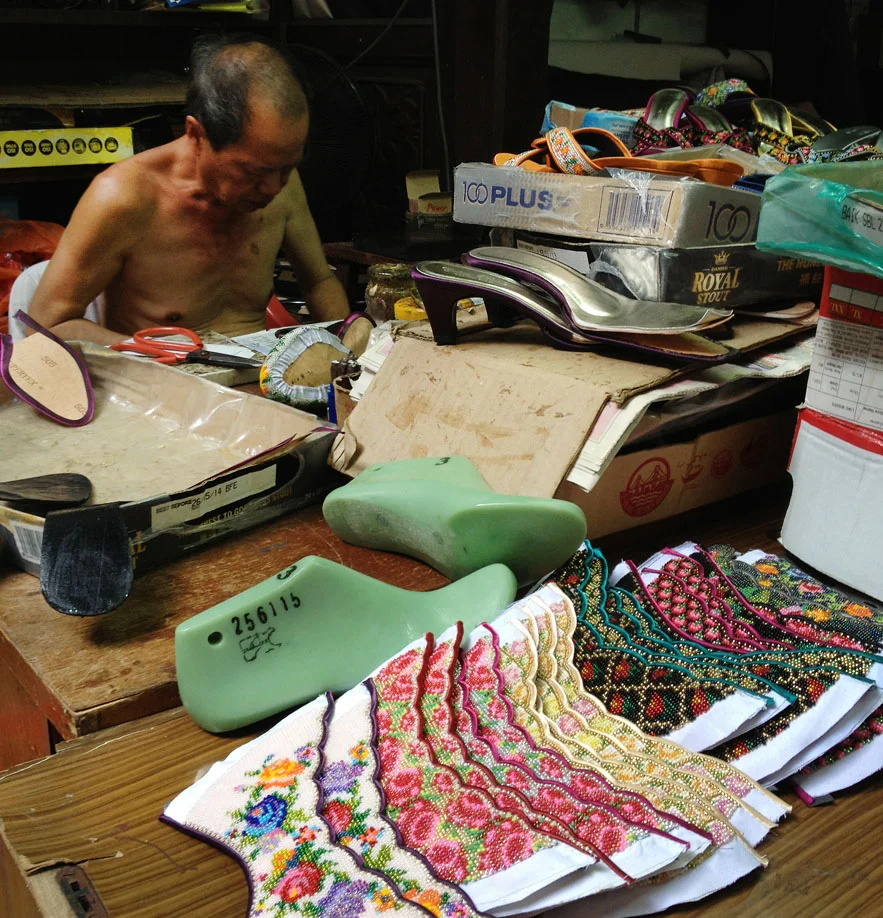
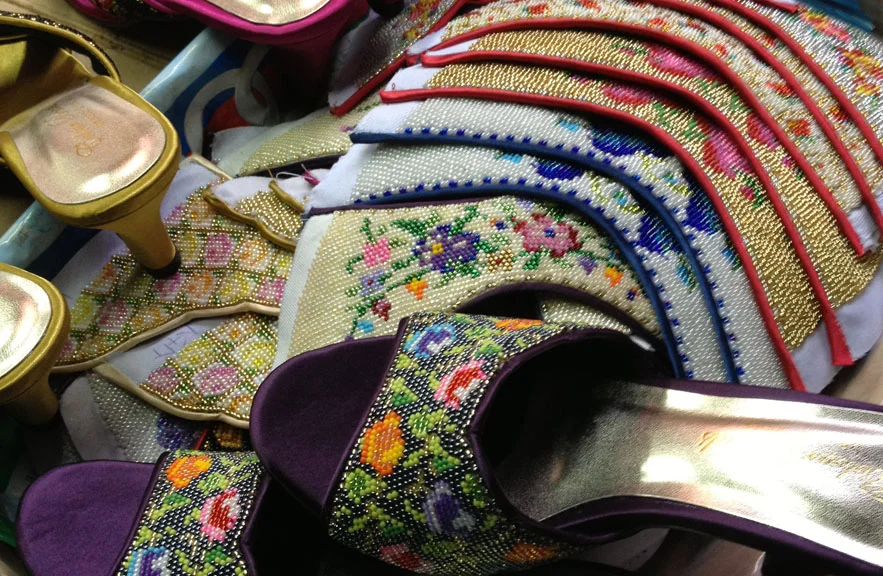

Malacca proved to be a very enjoyable and interesting couple of days of Peranakan (Straits Communities) food and culture. There are a number of lovely crafts still being made that are fun to see and shop for. Skilled Chinese Signmakers carve characters into solid wood before lacquering and gilding them; beaded shoemakers can make a pair of unique shoes in an afternoon (my wife bought two pairs and wears them often); traditional toymakers; natural incense makers; gold jewelry makers and wooden lantern-makers too. Antique shops tend to focus on the richly ornate Peranakan style that I love and good food is easy to find.
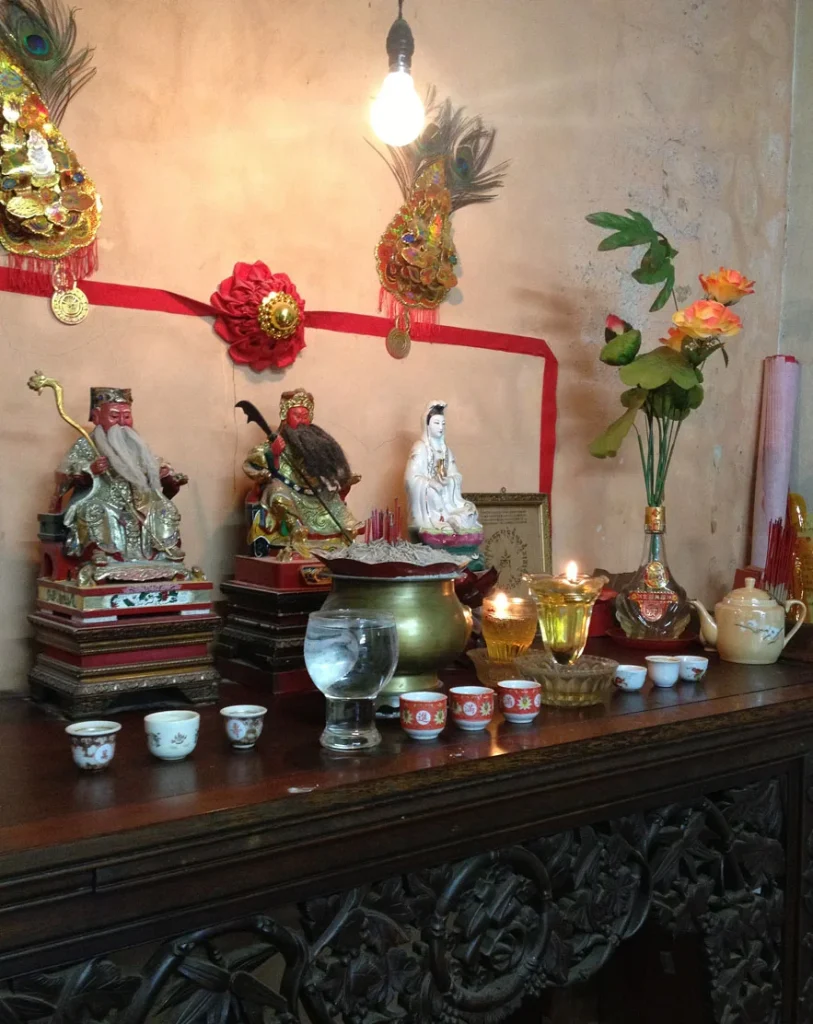
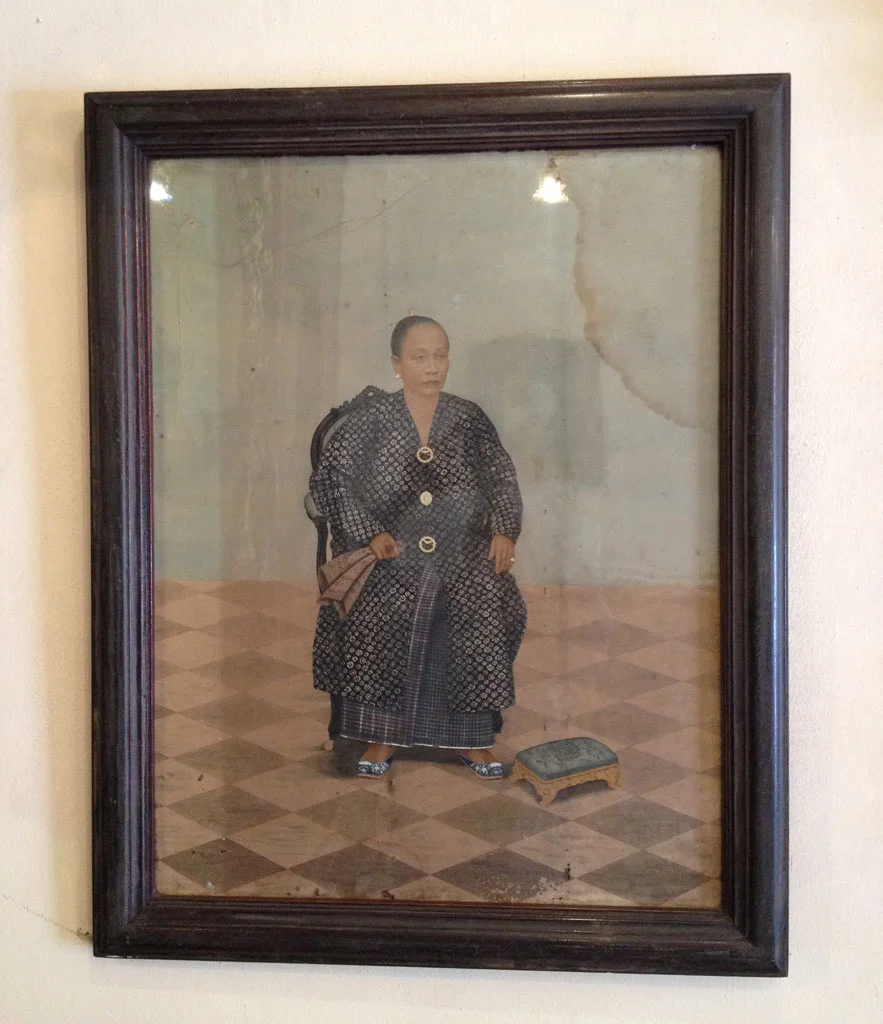
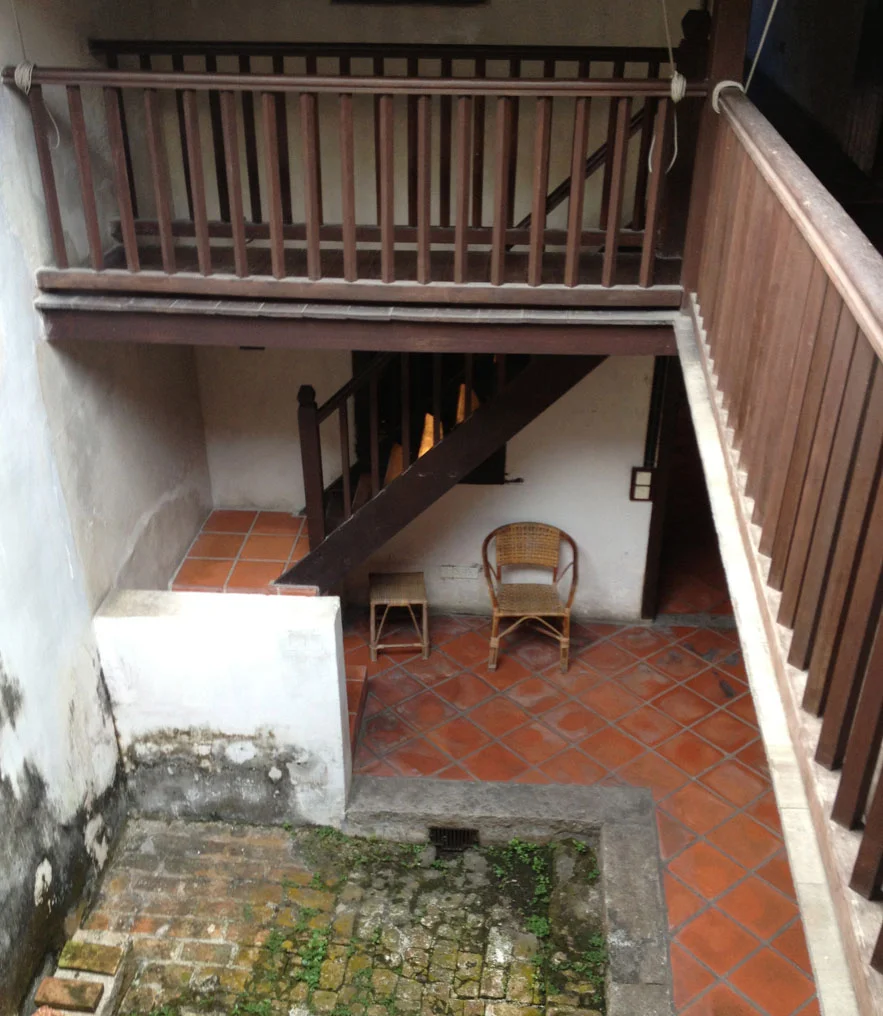
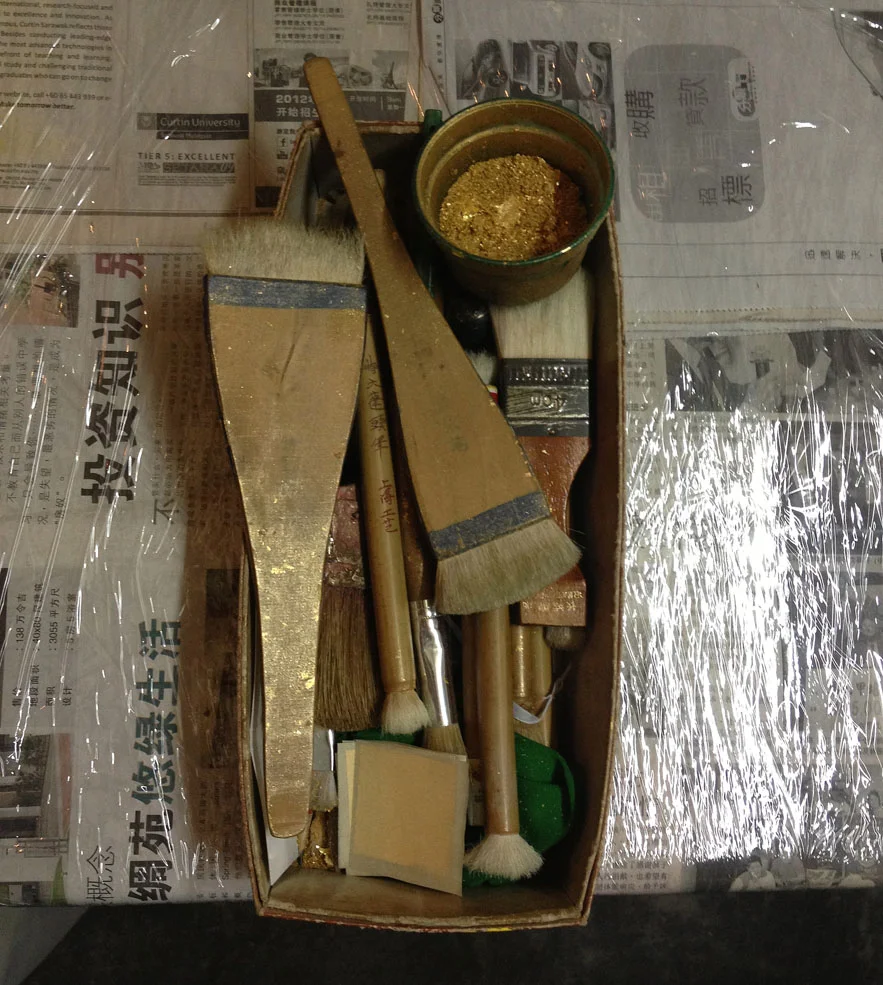
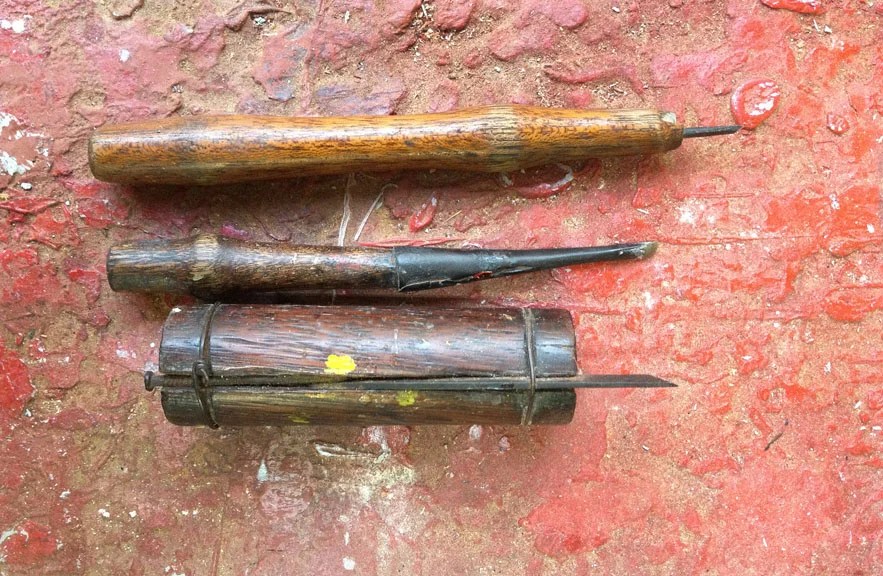
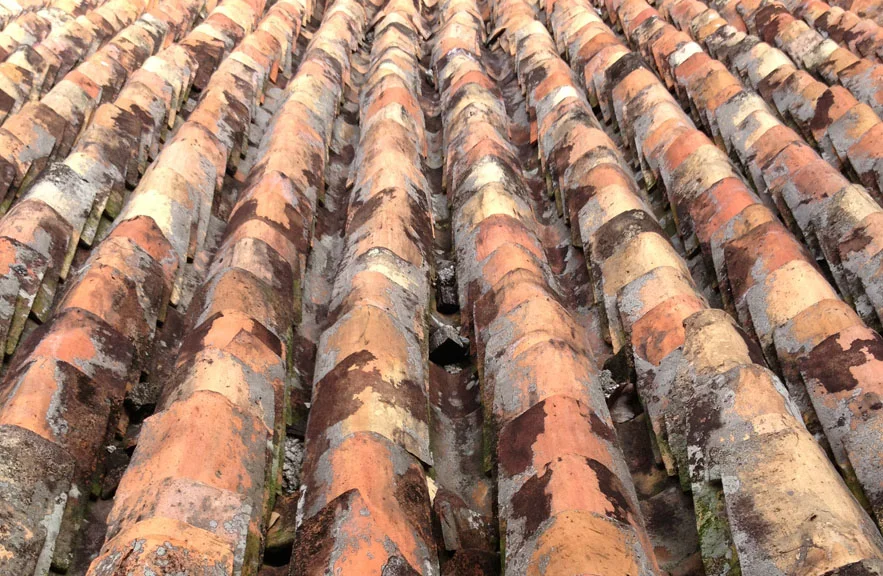

Malacca has been listed as a UNESCO world heritage site since 2008 and so walks through the old quarter are surrounded by the old shophouses many of which are incredibly deep and go right down to the water front.
I would recommend a visit to Malacca but if you plan to buy any lanterns, go now and then plan to wait for years to get them.
